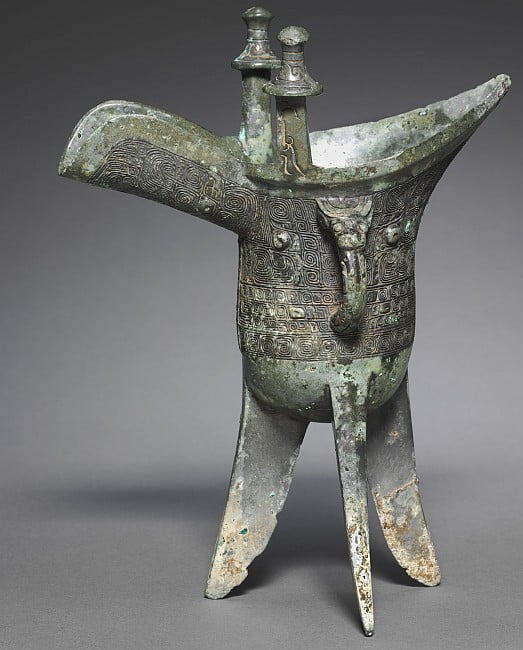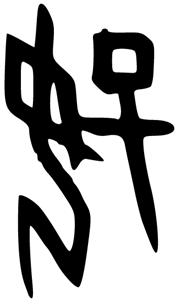In my last post, I mentioned how ten pairs of tortoises hexagrams lead us from Hexagram 41 to 61, where the crane calls back across the space between hexagrams.
This line is a not-so-hidden gem, beautiful in its own right:
‘Calling crane in the shadows,
Her young respond in harmony.
I have a good wine vessel,
I will share with you, pouring it all out.’
This is simply poetry, showing us the crane and her chick alongside the people sharing wine, inviting us to feel what they have in common.
The same parallel is used – a bit more heavy-handedly – in Song 165:
‘Look at the bird,
Song 165, Legge’s translation
Bird as it is , seeking with its voice its companion;
And shall a man
Not seek to have his friends?
Spiritual beings will then hearken to him;
He shall have harmony and peace.’
This Song has a great deal in common with Hexagram 61: it describes the birds calling from a dark valley, and celebrates sharing good wine with dancing and drumming.
But this is the Yijing, so there is more here than meets the eye. Stephen Field points to how the image of the crane represents the name of Hexagram 61 itself, zhong fu, 中孚:
‘The graph of fu 孚 depicts a claw or hand above a child, and literally means “to hatch,” or “hatchling,” and by extension, the “trust” of the hatchling for its mother.’
Stephen Field, The Duke of Zhou Changes
And then there is the ‘good wine-vessel’ to share – apparently a quite new image for the second half of the line. And yet…
The wine-vessel in question is a jue, used for pouring wine in rituals for the ancestors. Yet oddly, Schilling suggests the word could be read instead as ‘sparrow’. How come? Here’s a quotation from Karlgren’s dictionary:
“The cup had the form of a bird (see Couvreur) and our tsiak here and 雀 tsiak small bird are etymologically the same word, hence [爵 is] sometimes used for 雀.”
Karlgren (1923) as cited in Wenlin
I find it hard to see how this…

… is especially bird-shaped, but still… interesting coincidence?
The jue vessel in 61.2 is hao, ‘good’. Here is the character hao, as it was written on oracle bones:

It shows a mother and child.
I can’t put it better than this recent comment from Bronwen: ‘Gosh the layers within this wonderful book!’








